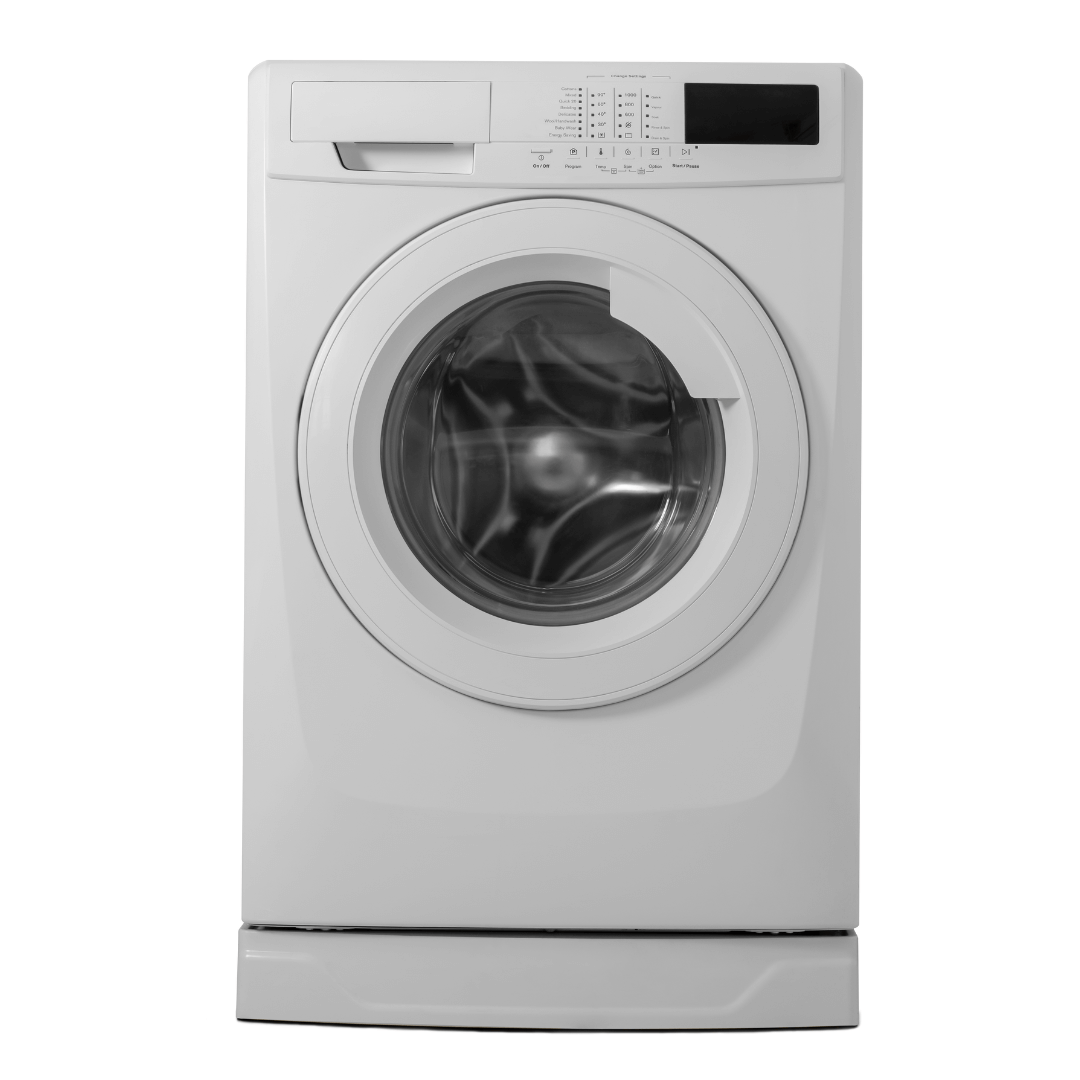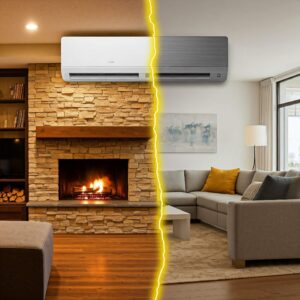Most people today are living in high-rise apartments or condos where space is a luxury. In such environments, hanging clothes out to dry under the sun is not always feasible. With limited space and often no access to outdoor areas for drying laundry, having a reliable dryer becomes a necessity rather than a luxury. But with so many options on the market, how do you choose the one that’s right for your home? To help you get started, let’s first explore the different types of dryers available.
1. Types of Dryers Available on the Market
There are several types of dryers available, each with its own set of advantages and disadvantages. Understanding these differences is crucial in helping you select the model that best suits your needs. Here’s a breakdown of the most common types, along with their pros and cons:

Vented Dryers
Vented dryers are the most traditional type of dryer, commonly found in many households. They operate by pulling in air from the surrounding area, heating it, and then blowing it through the clothes to evaporate moisture. The moist air is then expelled outside through a vent, making this type of dryer highly effective for quick drying.
Pros:
- Quick Drying: Vented dryers typically dry clothes faster than other types.
- Lower Cost: Generally more affordable both in terms of initial purchase and maintenance.
- Simple Operation: Easy to use with straightforward settings.
Cons:
- Requires External Venting: Needs a vent to the outside, limiting installation options.
- Less Energy Efficient: Can consume more energy compared to other dryer types.
- Potential for Moisture Build-Up: If not properly vented, it can cause moisture build-up in the home.

Condenser Dryers
Condenser dryers work by using a heat exchanger to condense the moisture from your clothes into water. This water is then collected in a reservoir or automatically drained away. Unlike vented dryers, condenser dryers do not require an external vent, making them more flexible in terms of placement within your home.
Pros:
- Flexible Installation: No need for an external vent, allowing for versatile placement in your home.
- Less Environmental Impact: Uses less energy than vented dryers.
- Better for Indoor Air Quality: Does not expel moist air into your home.
Cons:
- Slower Drying: Generally takes longer to dry clothes compared to vented dryers.
- Higher Initial Cost: More expensive to purchase than vented models.
- Regular Maintenance Needed: The water reservoir needs to be emptied regularly, and the condenser unit needs periodic cleaning.

Heat Pump Dryers
Heat pump dryers are the most energy-efficient option available. They use advanced technology to recycle the heat generated during the drying process, which significantly reduces energy consumption. These dryers operate at lower temperatures, making them gentler on clothes and ideal for those who prioritize energy savings and fabric care.
Pros:
- Highly Energy Efficient: Uses significantly less energy than other types, leading to lower utility bills.
- Gentle on Clothes: Operates at lower temperatures, reducing wear and tear on fabrics.
- Environmentally Friendly: Recycles heat, minimizing environmental impact.
Cons:
- High Upfront Cost: Initial purchase price is typically higher than other dryer types.
- Longer Drying Times: Takes longer to dry clothes due to lower operating temperatures.
- Complex Maintenance: Requires regular maintenance to ensure the heat pump system functions efficiently.
2. Understanding Your Needs
Now that you’re familiar with the different types of dryers available, the next step is to understand your specific needs. Are you drying large loads of laundry for a big family, or are you living alone and only doing a few loads a week? Do you have ample space in your laundry room, or are you working with a more compact area? Answering these questions will help you narrow down your options.
For larger families, a dryer with a bigger capacity might be necessary to handle the increased laundry load. If you live in an apartment or a small home, you might need a stackable or compact model that fits into tight spaces. By clearly defining your needs, you can focus your search on dryers that meet those requirements.
2.1 Energy Efficiency
In today’s environmentally conscious world, energy efficiency is a significant consideration when purchasing a dryer. An energy-efficient dryer not only helps reduce your carbon footprint but can also save you money on your utility bills.
When shopping for a dryer, look for the Energy Star label. Energy Star-certified dryers use about 20% less energy than standard models. Heat pump dryers, as mentioned earlier, are the most energy-efficient option, but many condenser and even some vented dryers also offer excellent energy performance.
Additionally, consider the dryer’s capacity and how it matches with your washing machine. A dryer with a larger drum can handle more clothes per cycle, reducing the number of loads you need to do and, therefore, the energy used.
2.2 Dryer Capacity
Dryer capacity is another crucial factor to consider. Dryers come in a range of sizes, typically measured in kilograms (kg). A standard dryer usually has a capacity between 7 to 8 kg, which is suitable for most households. However, if you often wash large items like comforters or do a lot of laundry, you might want to opt for a larger capacity dryer, such as one with a 9 to 10 kg capacity.
On the other hand, if you’re short on space or don’t do a lot of laundry, a smaller, compact dryer might be the better option. Just make sure that your chosen dryer can handle the size of your typical laundry load to avoid overloading, which can lead to longer drying times and increased wear on the machine.
2.3 Dryer Features and Settings
Modern dryers come with a variety of features and settings designed to make laundry day easier and more efficient. Here are some features to look out for:
- Sensor Drying: This feature uses sensors to detect moisture levels in the clothes and automatically adjust the drying time accordingly. This prevents over-drying, which can damage fabrics and waste energy.
- Wrinkle Prevention: Some dryers have a wrinkle prevention option that continues to tumble the clothes after the cycle ends, keeping them from sitting in a heap and developing wrinkles.
- Steam Function: Dryers with a steam function can help to remove wrinkles and freshen up clothes without the need for a full wash. This is a great option for quickly refreshing garments that have been sitting in the closet for a while.
- Customizable Drying Cycles: Many dryers allow you to customize drying cycles based on fabric type, moisture levels, and time. This feature lets you tailor the drying process to your specific needs, ensuring optimal results.
- Quiet Operation: If your laundry room is near living areas or bedrooms, consider a dryer with noise reduction features to minimize disruption.
These features can add to the cost of the dryer, so think about which ones are most important to you and your household.
2.4 Space and Installation Considerations
Before purchasing a dryer, it’s essential to measure the space where it will be installed. This includes not just the area where the dryer will sit, but also the space required for the door to open fully and any necessary ventilation.
If you’re working with a small space, consider a compact dryer or a stackable washer and dryer unit. Some models are designed specifically for tight spaces and can be installed in closets or other small areas.
Also, consider how the dryer will be vented. Vented dryers need a duct that leads outside, while condenser and heat pump dryers do not. If your laundry area is far from an exterior wall or if installing a vent is not feasible, a ventless dryer might be your best option.
2.5 Budget
Dryers come in a wide range of prices, from basic models to high-end machines with all the bells and whistles. Setting a budget before you start shopping can help you narrow down your options and avoid overspending.
While it’s tempting to go for the cheapest option, it’s important to consider the long-term costs as well. A more energy-efficient dryer might have a higher upfront cost but could save you money on your utility bills over time. Similarly, a durable, well-made dryer might cost more initially but will likely last longer and require fewer repairs, ultimately saving you money in the long run.
2.6 Brand Reputation and Reviews
When investing in a major appliance like a dryer, it’s wise to choose a brand with a solid reputation for quality and reliability. Researching customer reviews can provide valuable insight into the performance and longevity of different models.
Look for brands that offer strong warranties and have a good track record of customer service. This can give you peace of mind that if something goes wrong, you’ll be able to get the support you need.
2.7 Sustainability and Environmental Impact
If sustainability is important to you, consider the environmental impact of your dryer purchase. In addition to choosing an energy-efficient model, you can also look for dryers made from recycled materials or those that are manufactured in environmentally responsible ways.
Some brands are more committed to sustainability than others, offering take-back programs for old appliances or designing products that are easier to repair and maintain, reducing waste over time.
2.8 Maintenance and Longevity
Finally, consider the maintenance requirements and expected lifespan of the dryer. Regular maintenance, like cleaning the lint filter and checking the vent, can help keep your dryer running smoothly and efficiently.
Look for a dryer that’s known for its durability and that comes with a good warranty. The longer the warranty, the more confidence the manufacturer has in the product’s longevity. It’s also worth considering whether the dryer is easy to repair and if replacement parts are readily available.
3. Conclusion
Buying the right dryer for your home is a significant decision that can impact your daily life for years to come. By taking the time to consider your specific needs, understand the different types of dryers, and weigh the importance of features like energy efficiency, capacity, and brand reputation, you can make a choice that will serve you well.
Remember, the right dryer for you is the one that fits seamlessly into your lifestyle, meets your laundry demands, and offers reliable performance without breaking the bank. With the right research and careful consideration, you’ll find a dryer that keeps your clothes looking and feeling their best, load after load.
Happy shopping!
For maintenance and troubleshooting guides, read our blog.
You May Also Like
- How to Choose the Right Refrigerator Size for Your Home?
- Why Is My Washing Machine Not Draining Water?
- Why You Should Deep Clean Your Washer Dryer Once a Year?
- Inverter or Non-Inverter Air Conditioner: Which To Buy?
- What is the Right Air Conditioner Horsepower for Your Home?
- 5 Tips to Buy an Air Conditioner in Malaysia










